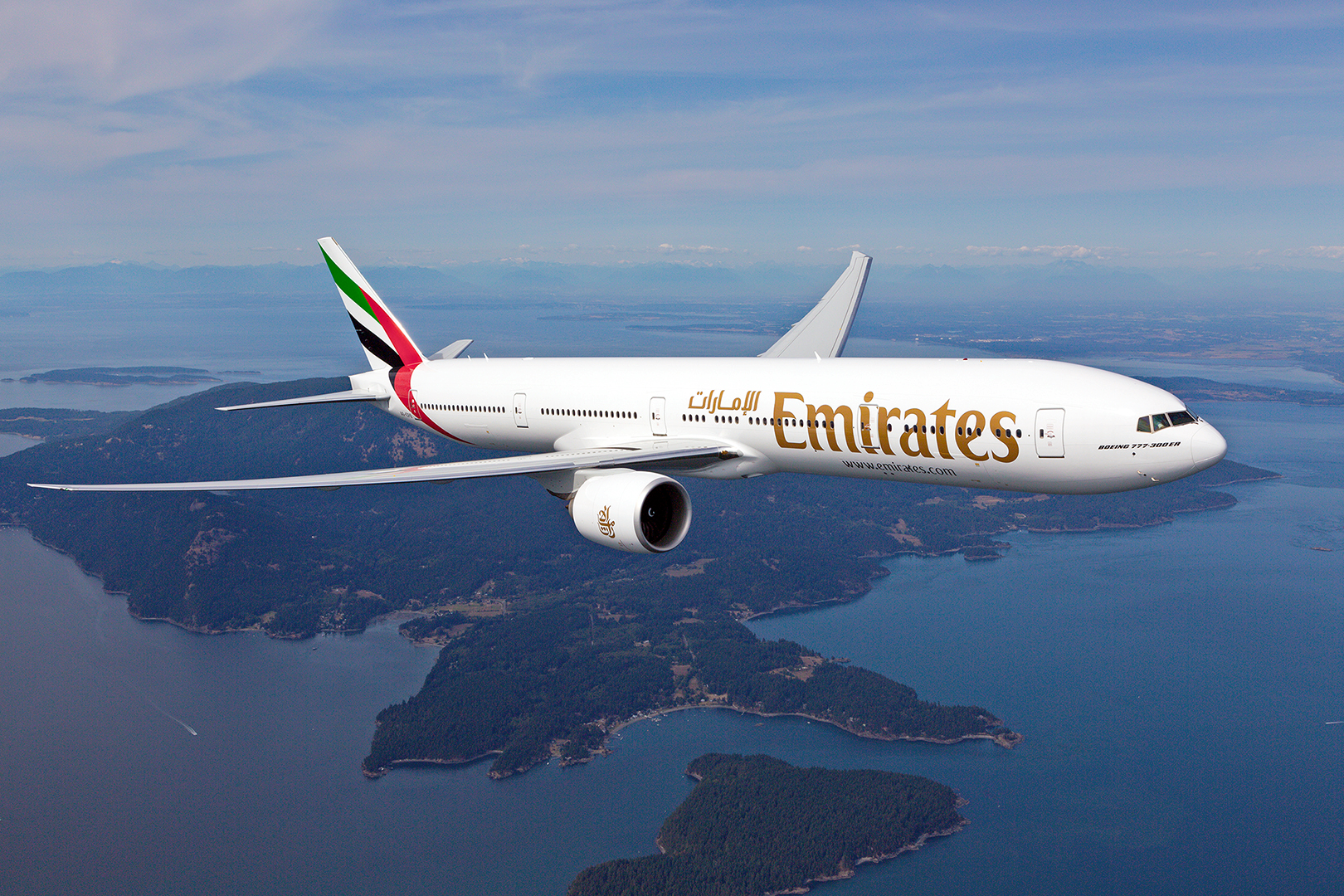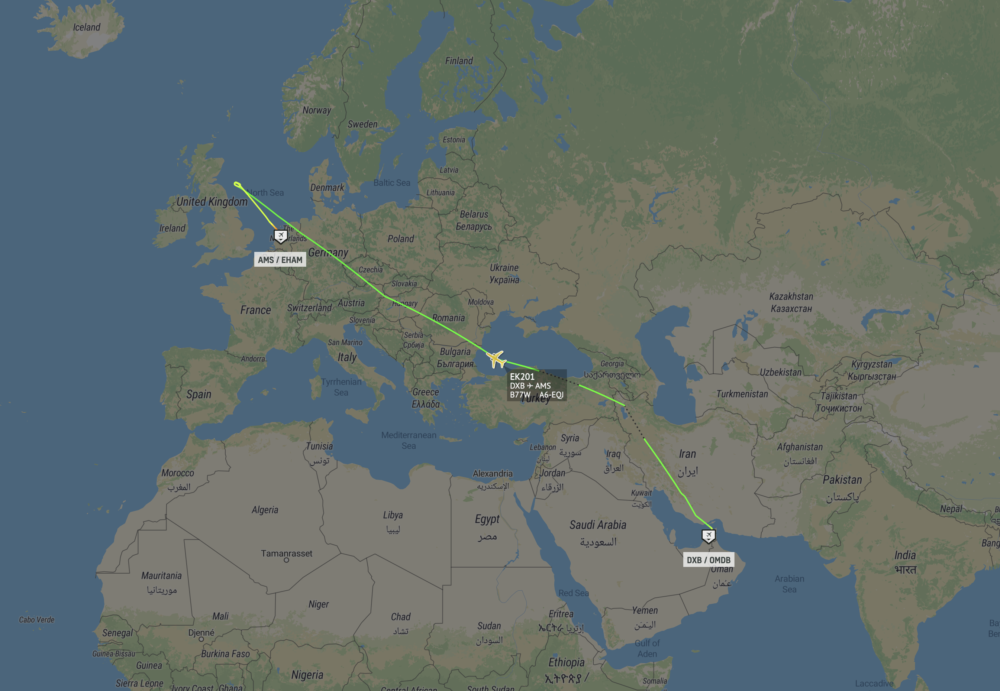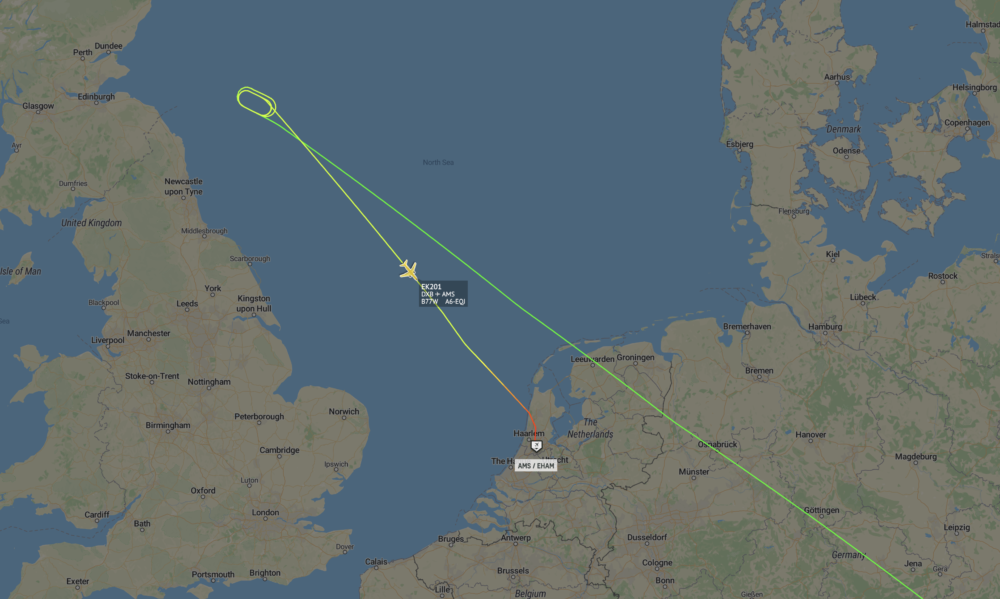An Emirates Boeing 777 destined for New York diverted to Amsterdam's Schiphol Airport on Sunday after a suspected fuel leak. The plane was over the North Sea when the incident occurred. The pilots descended to a lower altitude and went into a holding pattern before heading to Amsterdam.
Suspected fuel leak sees Boeing 777 divert to Amsterdam
According to a report in The Aviation Herald overnight, Emirates flight EK201 was about 250 nautical miles northwest of Amsterdam when the pilots suspected the fuel leak. Flight tracking data places the aircraft, A6-EQJ, east of the Scottish coastline, roughly parallel to Edinburgh at the time.
About six and a half hours into the flight, the data shows the aircraft cruising around 870 kilometers per hour at 10,350 meters. At this point, the plane descended approximately 4,000 meters in eight minutes.
The Aviation Herald reports the pilots went into a holding pattern at the new altitude before deciding to turn around and divert to Amsterdam. The aircraft landed safely there without further incident at 14:10 local time on Sunday. Ground crews greeting the plane on arrival did not see any obvious signs of a fuel leak. Factoring in the diversion to Amsterdam, A6-EQJ spent around eight and a half hours in the air.
A6-EQJ is a three-year-old Boeing 777-300ER. On Sunday, the aircraft was operating EK201, Emirates' regular service to New York's John F Kennedy Airport. The flight pushed back from the gate in Dubai on time, at 08:30 on Sunday morning. After 14 and a half hours in the air, the flight normally lands in New York mid-afternoon.
A spate of turbulence related incidents at Emirates
Being such a young plane, this is the first recorded incident involving A6-EQJ. A look at Emirates' incident history overall shows unexpected turbulence caused most recent incidents at the airline. In the past two years, Emirates aircraft have been involved in four turbulence-related incidents.
In July 2019, an Emirates A380 flying from Auckland to Dubai was east of Chennai when it encountered unexpected turbulence. Reports indicate passengers were thrown against the cabin ceiling. Twenty-six passengers received injuries, one of them receiving a neck fracture. The aircraft, operating EK449 on July 10, 2019, went on to land in Dubai several hours later.
Three months later, an Emirates Boeing 777-300 en route to Denpasar hit clear air turbulence near Singapore. The aircraft dropped 100 feet, and 11 people suffered some injuries. None of the injuries were serious enough to cause a diversion. The flight went on to land in Denpasar safely.
In January 2020, an Emirates Airbus A380 flying down to Johannesburg ran into turbulence over Mozambique. The turbulence was rated moderate to severe, and one passenger sustained serious leg injuries. A subsequent investigation described the event as "severe turbulence of vertical gust forces."
Just weeks later, in February 2020, another Airbus A380, this time flying from Los Angeles to Dubai, was near Salt Lake City when it flew headlong into severe turbulence. One passenger fractured their ankle after getting thrown into the air.
Just hours after landing at Schiphol Airport on Sunday, A6-EQJ was heading home. The aircraft departed Amsterdam at 18:01 local time and landed in Dubai in the early hours of Monday morning. Passengers continued onto New York on another Emirates aircraft later that day.



